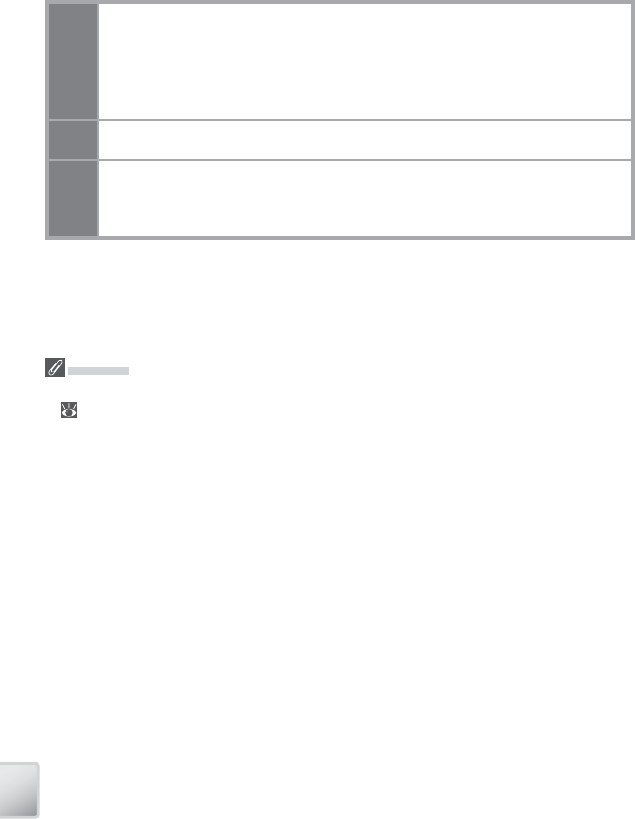
92
Technical Notes
Cleaning
Lens Avoid touching glass parts with your fi ngers. Remove dust or lint with a blower (typi-
cally a small device with a rubber bulb attached to one end that is pumped to pro-
duce a stream of air out the other). To remove fi ngerprints or other stains that can
not be removed with a blower, wipe the lens with a soft cloth, using a spiral motion
that starts in the center of the lens and works out to the edges. If this fails, clean the
lens using a cloth lightly dampened with commercial lens cleaner.
Monitor Remove dust or lint with a blower. To remove fi ngerprints and other stains, clean the
monitor with a soft, dry cloth, being careful not to apply pressure.
Body Use a blower to remove dust, dirt, or sand then wipe gently with a soft, dry cloth.
After using the camera at the beach or seaside, wipe off any sand or salt with a dry
cloth lightly dampened with fresh water, then dry thoroughly. Note that foreign
matter inside the camera could cause damage not covered under warranty.
Do not use alcohol, thinner, or other volatile chemicals.
Batteries
• Check the battery level when taking the camera out and charge the battery if necessary
( 11). Do not continue charging once the battery is fully charged, as this will result in
reduced battery performance. If possible, carry a fully-charged spare battery when taking
pictures on important occasions.
• Do not use the battery at ambient temperatures below 0 °C (32 °F) or above 40 °C (104 °F).
During charging, the tem per a ture should be in the vi cin i ty of 5–35 °C (41–95 °F). Note that
the battery may become hot during use; wait for the battery to cool before charging. Failure
to observe these precautions could damage the battery, impair its performance, or prevent
it from charging normally.
• On cold days, the capacity of batteries tends to decrease. Be sure that the battery is fully
charged before heading outside to take pictures in cold weather. Keep spare batteries in a
warm place and exchange as necessary. Once warmed, a cold battery may recover some of
its charge.
• Dirt on the battery terminals can prevent the camera from functioning.
• When the battery is not in use, remove it from the camera or battery charger and replace
the terminal cover. The camera and battery charger draw minute amounts of current even
when off ; if left in place, the battery could be drained to the point that it no longer functions.
Turning the camera on or off while the battery is exhausted can result in reduced battery life.
If the battery will not be used for an extended period, store it in a cool (15 °C–25 °C / 59 °F–
77 °F), dry place. Recharge it at least once a year and run it fl at before returning it to stor-
age.
• Replace the battery when it no longer holds a charge. Used batteries are a valuable re-
source. Please recycle used batteries in accordance with local regulations.


















